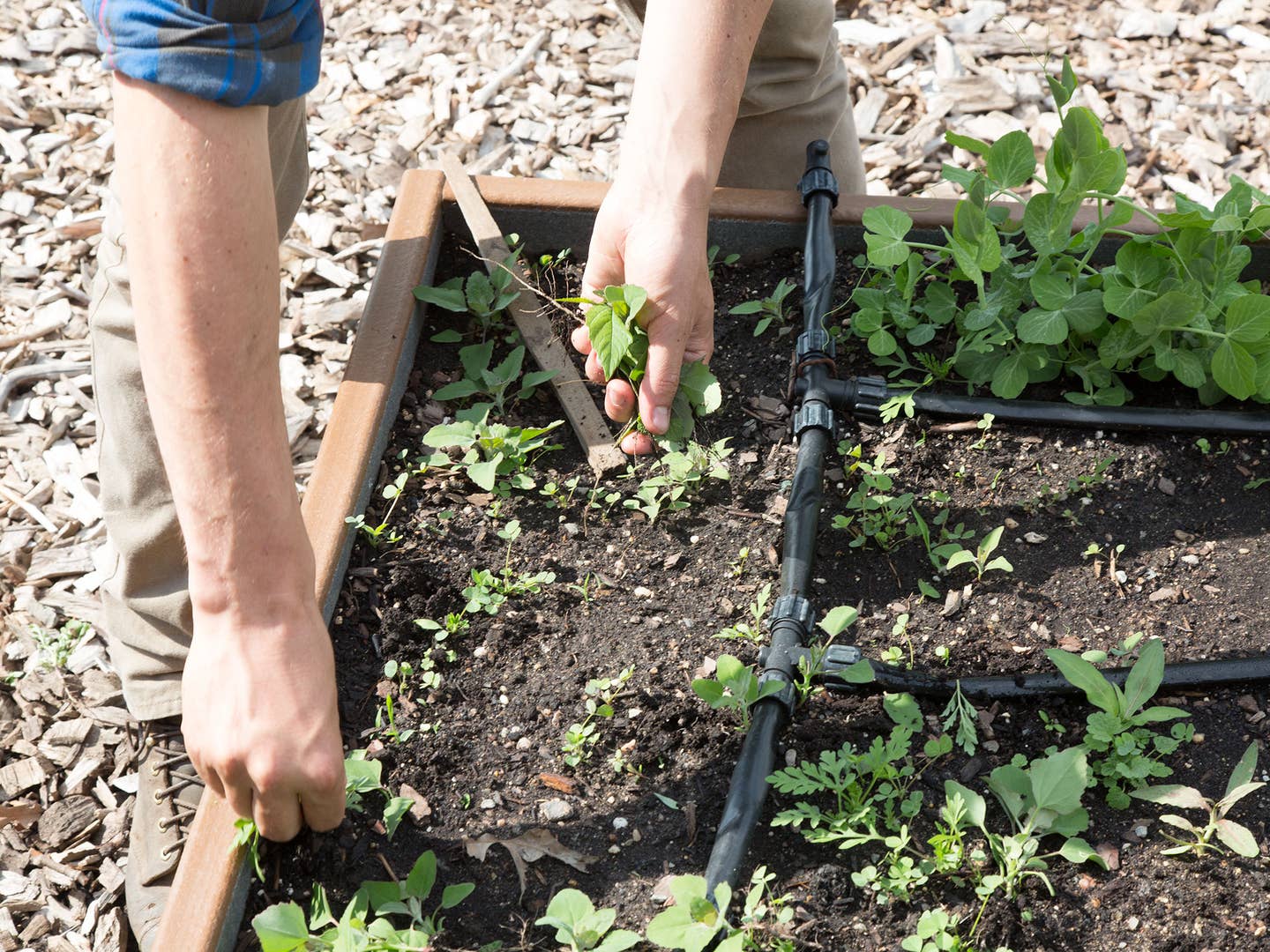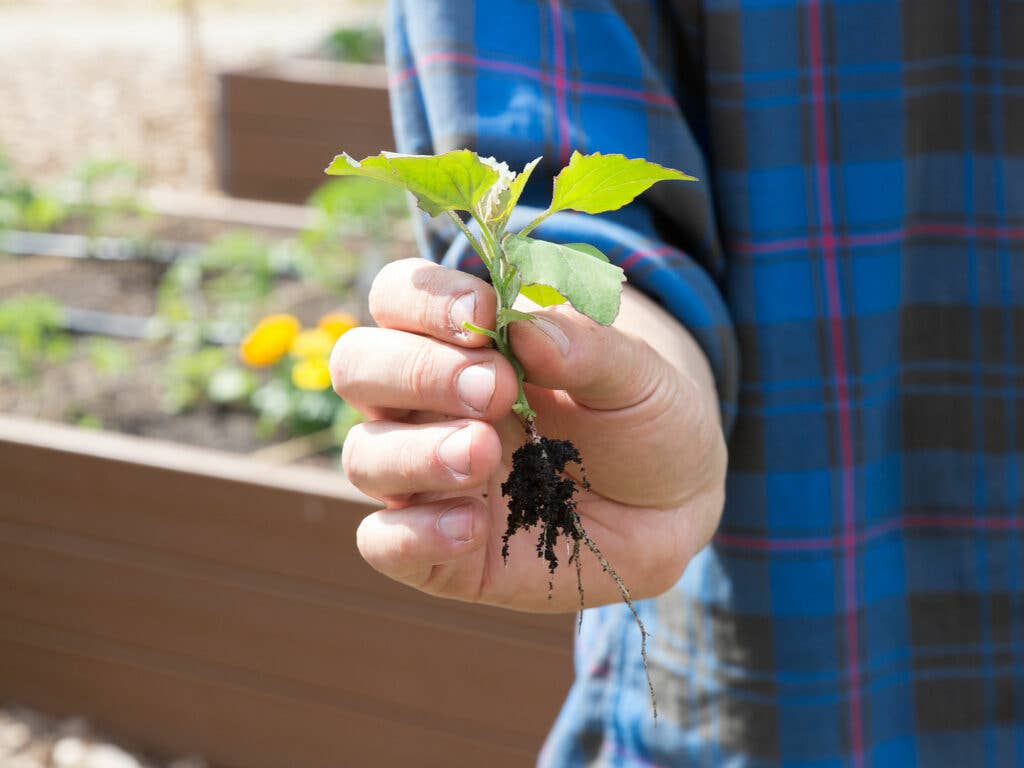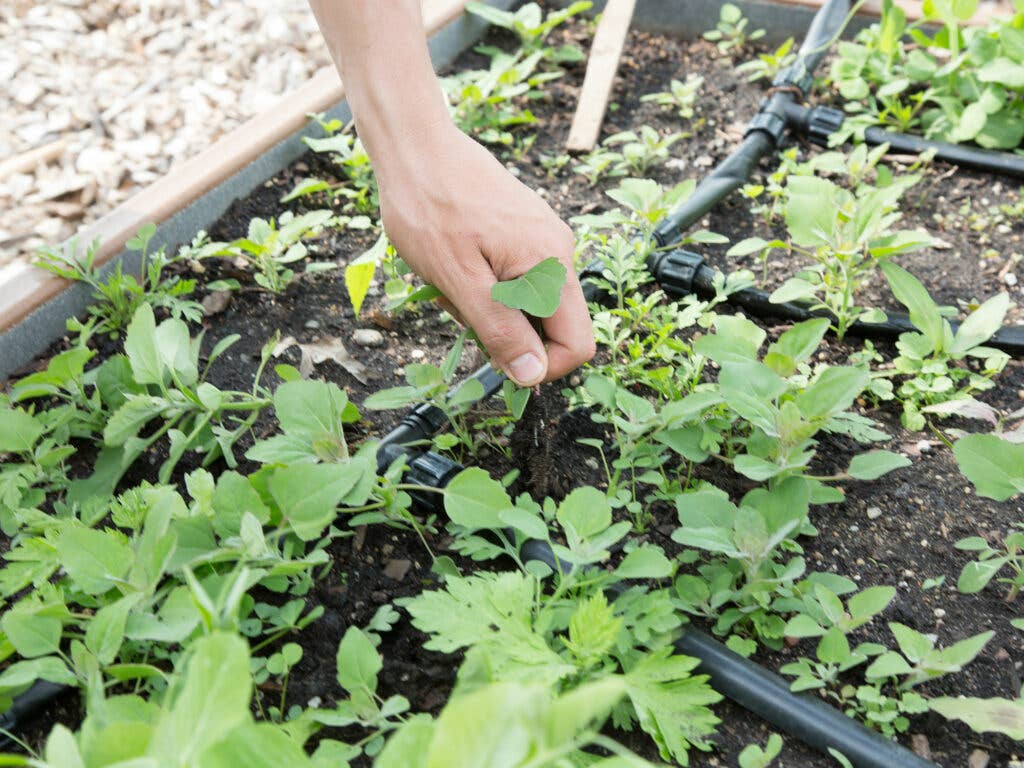

"Lambs quarters," "chickweed," "bedstraw"—I’m staring at little labels coming out of the ground with sometimes fanciful, sometimes romantic names, wondering how each of these plants tastes.
But Shawn Connell, who works here at the GrowNYC teaching garden on Governors Island in New York City, is quick to point out that these aren't for eating. I mean, I guess you could eat them, but these plants are weeds, and this is the garden's weed library.
They keep an example of each of the intruders on hand so people can know the enemy by sight. These are the pests who steal nutrients from the soil and steal sunlight from the air. Shawn is perfectly clear: They must be eliminated.

Weeds are easy to find—anything that grows in your garden that you don’t want to eat is a weed and needs to go. Pure and simple: It’s a zero tolerance policy. If you let weeds grow for long enough, they will go to seed, and one gust of wind could spread those seeds all over your garden bed. Let that happen and you’ll be yanking out lambs quarters for days.
Shawn explains two strategies for weed neutralization—one to employ when preparing your soil, and one for after you’ve planted.
If you are reusing a bed and soil from last year, turn over your bed to mix up the soil. This process will bring lots of weed seeds to the surface, and they’ll start to grow, so you can pluck them out and rid your soil of them before you even plant.

This won’t eliminate all your weeds, however. In beds with plants that don’t grow along the ground (like tomatoes), you can lay a layer of mulch, straw, or even black plastic over the soil around your plants. This will choke the weeds off, preventing them from getting sunlight.
For the rest of your beds, good old-fashioned hand plucking is the best way to weed. Grab them early, grab them often, grab as much of the root system as you can, and be vigilant.
Missed the first installment of Building a Garden? Find it here.
Keep Reading
Continue to Next Story










